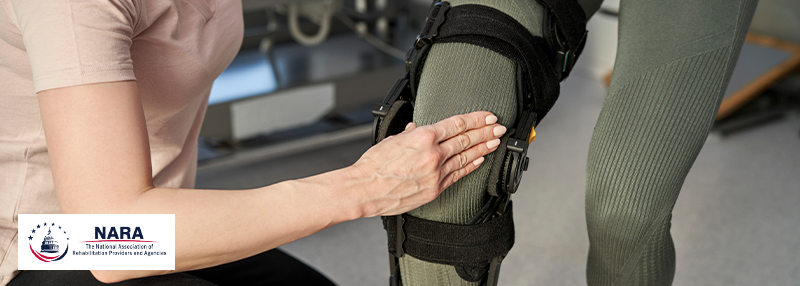Posted On: February 22, 2024 by NARA in: Exercise Physical Therapy

As winter blankets the world in snow and ice, the season brings with it not only beautiful landscapes but also unique challenges to our well-being. From physical health concerns to the impact on mental well-being, the colder months can pose various risks. In this blog, we will delve into the crucial role of rehabilitation in ensuring a healthy and active winter season.
Physical Health
- Increased Risk of Falls and Injuries: The colder months bring an increased risk of slips and falls. Icy sidewalks and slippery driveways can lead to injuries ranging from sprains to fractures. Rehabilitation can help strengthen muscles, improve balance, and enhance coordination, which can help to reduce the risk of those accidents.
- Winter Inactivity: Cold weather often discourages outdoor activities, leading to a decrease in overall physical activity. Sedentary lifestyles can contribute to weight gain, muscle atrophy, and joint stiffness. Rehabilitation programs can be tailored to combat these issues. These programs can help individuals enhance their mobility and maintain fitness levels during the winter months.
- Joint Stiffness: Colder temperatures can worsen joint stiffness, especially for individuals with conditions like arthritis. Rehabilitation exercises and therapies can help manage joint pain and maintain flexibility, allowing individuals to move more comfortably throughout the winter.
Mental Health
- Seasonal Affective Disorder (SAD): Winter's reduced sunlight can contribute to Seasonal Affective Disorder, a form of depression that occurs seasonally. Rehabilitation interventions can be instrumental in managing symptoms and improving overall mental well-being.
- Social Isolation: The winter season can lead to increased social isolation, as people may be less inclined to venture outdoors. Rehabilitation can incorporate group activities, fostering a sense of community and combating isolation.
Preparing for Winter Activities
- Customized Exercise Programs: Rehabilitation professionals can design personalized exercise regimens to prepare individuals for winter sports and activities. Strengthening key muscle groups and improving flexibility can help prevent injuries during winter pursuits.
Winter Rehabilitation Tips
- Find indoor activities such as indoor swimming or yoga.
- Modify your exercises to suit the weather and indoor settings.
- Layer up to stay warm and comfortable while exercising outdoors.
- Wear appropriate footwear and take extra caution on icy surfaces.
- Don't push yourself too hard, especially if you're recovering from an injury.
Winter wellness goes beyond just bundling up in warm layers. It involves proactive steps to address the unique challenges posed by the colder months. This winter, embrace the wintry weather with a commitment to your well-being and let rehabilitation be your guide to winter wellness.

0 comments